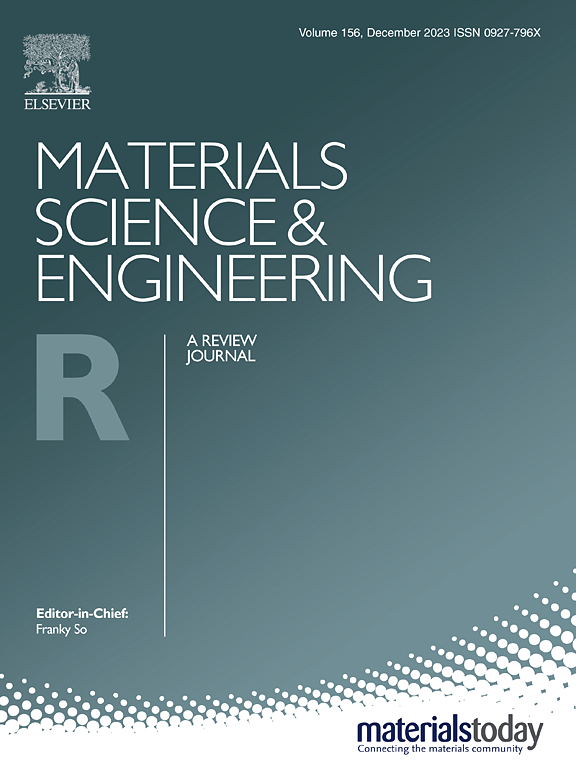设计低环境足迹的有机混合离子-电子导体,用于生物电子学和能源储存
IF 31.6
1区 材料科学
Q1 MATERIALS SCIENCE, MULTIDISCIPLINARY
引用次数: 0
摘要
有机混合离子-电子导体(OMIECs)被吹捧为有机电子学中非常有前途的一个子类别,可以应用于有机储能,在全球范围内实施,以及生物电子学,其中生物相容性是一个额外的关键要求。因此,新型omiec的持续开发不应仅仅关注于开发目标应用中的高性能材料,还应越来越重视开发低环境足迹的材料,以符合未来对可持续电子产品的需求。为了推动OMIEC研究的这一方向,下面的综述首先探讨了OMIEC在有机电化学晶体管(OECTs)和生物传感、信号处理和神经形态计算以及有机储能方面的新兴应用,以提取每个目标应用所需的高性能关键材料特性。本文还总结了三种不同类型的OMIEC,包括基于小分子、共轭聚合物和2D/3D共价有机框架的OMIEC,以突出每种OMIEC的关键特征和特定应用的适用性。最后,讨论了实现低环境足迹合成和omiec材料设计多样化的策略,其中包括部署更环保的交叉偶联和无金属聚合,以及合成后改性。本文章由计算机程序翻译,如有差异,请以英文原文为准。
Designing organic mixed ionic-electronic conductors with low environmental footprint for bioelectronics and energy storage
Organic mixed ionic-electronic conductors (OMIECs) are touted as a highly promising sub-class of organic electronics that see application in organic energy storage, where global scale implementation is envisioned, as well as bioelectronics, where biocompatibility is an additional key requirement. Therefore, the ongoing development of new OMIECs should not just focus on developing materials of high performance in target applications, but also place increasing emphasis on developing materials of low environmental footprint, in line with the future need for sustainable electronics. To empower this direction of OMIEC research, the following review first explores the emerging applications of OMIECs in organic electrochemical transistors (OECTs) and biosensing, signal processing and neuromorphic computing, as well as organic energy storage, to distil the key materials characteristics required for high performance in each target application. A summary of the three different categories of OMIECs, which include those based on small molecules, conjugated polymers and 2D/3D covalent-organic frameworks is also provided, to highlight the key characteristics of each OMIEC and suitability for specific applications. Finally, strategies that enable the low environmental footprint synthesis and materials design diversification of OMIECs are discussed, which encompass the deployment of more environmentally benign cross-coupling and metal-free polymerisations, as well as post-synthetic modification.
求助全文
通过发布文献求助,成功后即可免费获取论文全文。
去求助
来源期刊

Materials Science and Engineering: R: Reports
工程技术-材料科学:综合
CiteScore
60.50
自引率
0.30%
发文量
19
审稿时长
34 days
期刊介绍:
Materials Science & Engineering R: Reports is a journal that covers a wide range of topics in the field of materials science and engineering. It publishes both experimental and theoretical research papers, providing background information and critical assessments on various topics. The journal aims to publish high-quality and novel research papers and reviews.
The subject areas covered by the journal include Materials Science (General), Electronic Materials, Optical Materials, and Magnetic Materials. In addition to regular issues, the journal also publishes special issues on key themes in the field of materials science, including Energy Materials, Materials for Health, Materials Discovery, Innovation for High Value Manufacturing, and Sustainable Materials development.
 求助内容:
求助内容: 应助结果提醒方式:
应助结果提醒方式:


